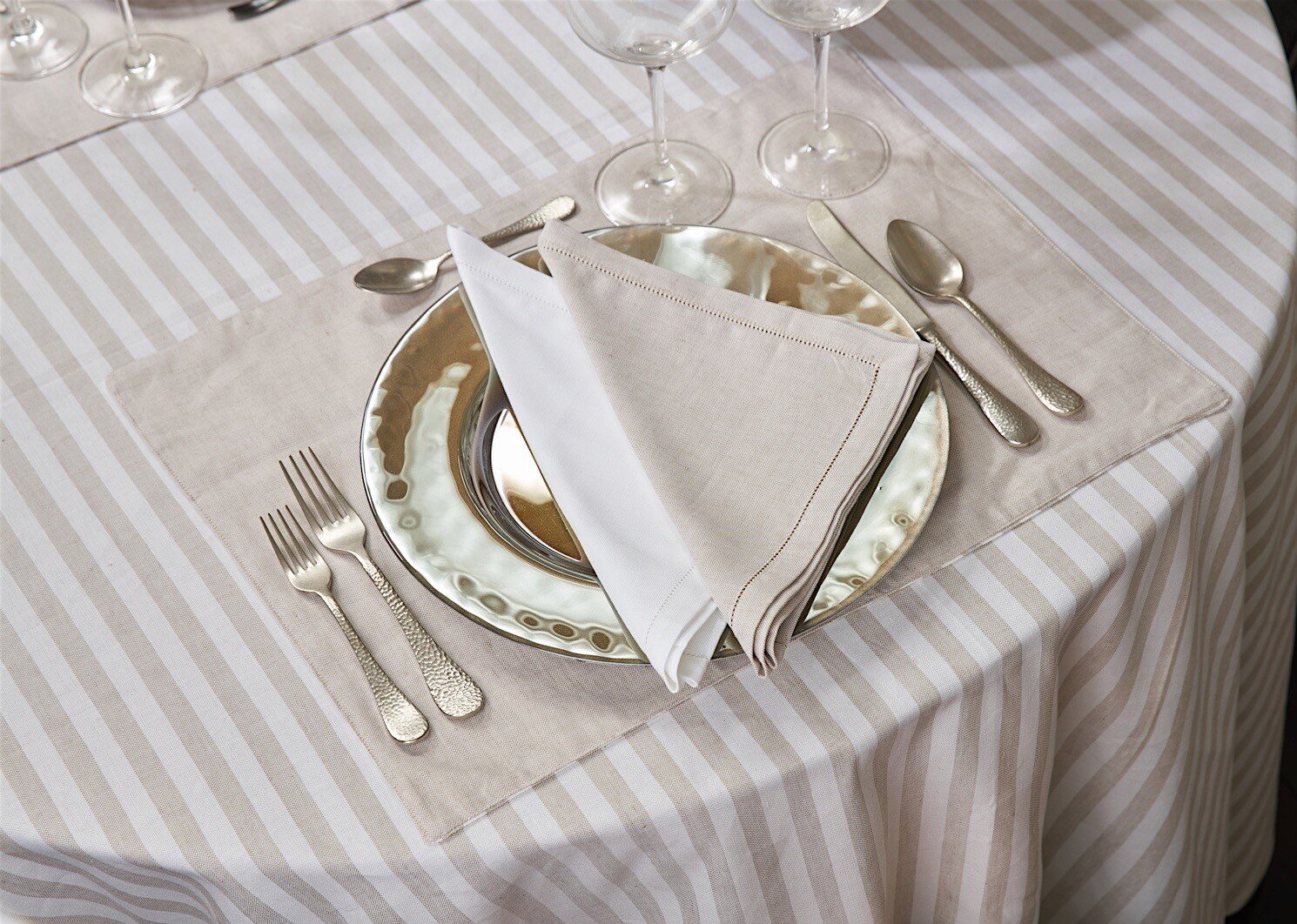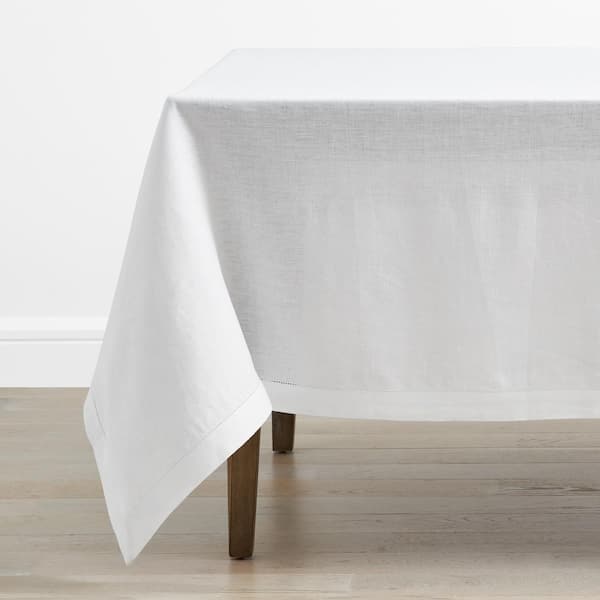Attractive Table Cloths: Boost Your Dining Room Decor
Attractive Table Cloths: Boost Your Dining Room Decor
Blog Article
Linen Material Technologies: Exploring Modern Trends and Creative Applications in Design and Textile Sector
From lasting manufacturing techniques to innovative weaving modern technologies, the evolution of linen is improving the landscape of the fabric market. As we dig right into the realms of creative design applications and the emergence of linen blends and hybrid textiles, a new phase unravels in which linen's role in future fabric developments takes facility stage.
Sustainable Practices in Bed Linen Manufacturing
Sustainable practices in bed linen manufacturing have become progressively essential in the textile industry's efforts to minimize ecological effect and promote moral sourcing techniques. Bed linen, an all-natural fiber originated from the flax plant, provides a series of advantages such as sturdiness, biodegradability, and breathability. Nevertheless, traditional approaches of bed linen manufacturing can include substantial water usage, chemical use, and energy-intensive processes.
To address these obstacles, numerous fabric manufacturers are taking on sustainable methods throughout the linen manufacturing process. This includes sourcing flax from natural farms that prevent unsafe chemicals and chemicals, executing water-efficient retting methods to extract fibers from the flax stalks, and using environmentally friendly dyes and surfaces. In addition, some companies are investing in eco-friendly power sources to power their manufacturing centers and lowering waste through recycling and upcycling efforts.
Technical Developments in Bed Linen Weaving
With the growing focus on sustainable methods in linen manufacturing, the textile industry is now experiencing a rise in technical developments particularly targeted at transforming the art of bed linen weaving. These technologies are improving the way linen materials are produced, providing enhanced effectiveness, top quality, and creative thinking in weaving strategies.
Among the crucial technical innovations in bed linen weaving is the assimilation of digital looms. These sophisticated looms are geared up with software application that permits complex and complicated styles to be woven with accuracy. By digitizing the weaving procedure, makers can accomplish higher consistency and accuracy in their bed linen materials.
Additionally, developments in yarn spinning technology have actually allowed the production of finer and even more sturdy bed linen yarns - table cloths. This causes softer and smoother bed linen textiles that retain their quality also after numerous uses and washes
In addition, the development of environment-friendly dyeing processes and finishes for bed linen materials is acquiring grip. These sustainable techniques not only decrease the ecological influence however additionally cater to the raising customer demand for morally created textiles.
Creative Layout Applications for Bed Linen
Innovative artistic techniques are increasingly shaping the imaginative layout applications for linen in the textile market. Bed linen's all-natural aesthetic allure and capability to mix with various other fabrics make it a favorite option for producing special garments and devices that cater to the ecologically mindful customer.
Moreover, designers are try out linen in home design, using its durable and breathable nature to craft trendy furnishings such as drapes, bedding, and upholstery. The structure and drape he has a good point of linen bring a feeling of refinement and convenience to interior spaces, adding a touch of sophistication to modern-day homes.

Bed Linen Blends and Hybrid Fabrics

Hybrid textiles, on the other hand, take the concept of mixing an action additionally by integrating additional components such as metallic threads, recycled products, or conductive fibers. These ingenious textiles not only broaden the design opportunities however likewise introduce useful elements like conductivity, antimicrobial homes, or boosted durability. Crossbreed fabrics are increasingly being used in different sectors, including style, indoor layout, and technological textiles, where the need for multifunctional materials gets on the rise.
Bed linen's Role in Future Fabric Innovations

In the realm of future textile developments, bed linen is anticipated to be a vital gamer in the growth of advanced practical materials. Scientists and designers are checking out means to improve bed linen's intrinsic high qualities through technical developments, such as incorporating clever fabrics, nanotechnology, and efficiency finishes. These advancements aim to raise linen's efficiency features, making it ideal for a wider array of applications, from activewear to protective apparel.
Additionally, the mix of linen with various other natural or synthetic fibers opens endless opportunities for creating unique fabrics with one-of-a-kind properties and performances. By leveraging bed linen's characteristics and checking out ingenious blends, the fabric industry is positioned to introduce amazing advancements that satisfy evolving customer needs and sustainability demands.
Final Thought
In verdict, the expedition of lasting techniques, technical advancements, innovative layout applications, linen blends, and its function in click for info future fabric developments highlight the continual development of linen fabric in the modern layout and fabric market. With a concentrate on technology and creativity, the convenience and environmentally friendly nature of linen make it a beneficial product for makers and developers alike, leading the way for more developments and improvements in the field of textiles.
As we dive right into the realms of creative style applications and the development of bed linen blends and hybrid materials, a new phase unravels in which linen's function in future fabric developments takes facility phase.
Exploring the fusion of linen with other textiles has actually led to the introduction of cutting-edge blends and crossbreed textiles in the contemporary textile industry. Linen blends supply an unique combination of the characteristics of linen with those of various other fibers, resulting in textiles that have improved properties such as increased toughness, enhanced draping, and decreased wrinkling.The advancement of linen blends and crossbreed textiles has set the phase for Bed linen to play an essential role in driving future textile innovations.In the realm of future fabric innovations, bed linen is expected to be an essential gamer in the advancement of advanced functional materials.
Report this page